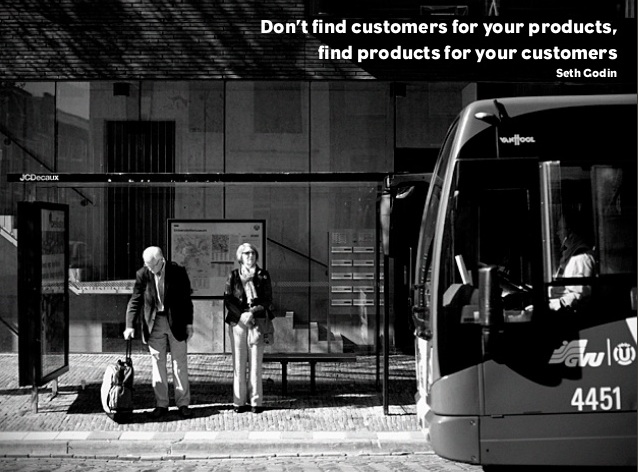Rethinking Business in the New Digital: Customer MUST be At the Core
I had the pleasure of being asked to be part of a panel at Mesh a few weeks ago called “Beyond Social Monitoring“. I was in good company with Joel Yashinksky, CMO and SVP of Marketing and Consumer Business Insights at McDonald’s Canada, and Scott Lake, CEO of Source Metrics.
The panel provided some amazing insights into best practices that has moved further than just listening. An important part of this discussion was the brave McDonald’s campaign called “Our Food. Your Questions“, which won numerous awards and accolades including Marketing Mag’s Marketer of the Year 2012.
This quote from Alex Sévigny, director of the McMaster-Syracuse Master of Communications Management program said it all:
“It was a courageous and savvy move that recognizes the importance of creating a kinship with consumers”
“Trust and reputation are becoming a fundamental part of building a brand and maintaining a brand community. The McDonald’s campaign is great in that respect. It’s absolutely brave because it required them to give the public a backstage pass to how things work.”

The quote from Kristin Laird of Marketing Mag that stood out for me was this,
I think it marks a turning point in how large corporations will interact with their customers going forward. It was the transparency that got me. It feels real. It changed my perception of what McDonald’s is all about.
In a relatively short-time span, where many brands are learning quickly the negative impacts of errant tweets and “very public” customer service missteps, one brand, which had more to lose given years of customer speculation regarding its food, its processes, and negative health claims, chose to confront its customers about anything and everything they wanted to know.
Joel Yashinksky, CMO of McDonalds, understood they were probably headed into the “Lion’s den” but faced it head on. I commented that working for another quick-service restaurant (QSR), my client had faced years of customer innuendo and backlashes, which were now showing up on forums, photo-sharing sites, Twitter and many review sites.
Many brands choose to bury their heads in the sand to avoid facing the detractors head-on. Not McDonald’s. It’s the reason why many of those I’ve spoken to, including my own kids, will come back to McDonald’s (in moderation, of course).
In paving the way for brands who are more prone to consumer attacks, McDonald’s has proven they’ve not only survived the pending consumer firestorm, they’ve come out on top!
Why are we still trying to prove the ROI of Social?
Everyone agrees: the KPI’s are all wrong.
The smart marketer has dismissed the value of a “Like” or the “Number of Followers” as a true success metric. Where engagement is still a hard metric to measure, many in the C-suite still want proven conversion. How do we prove that social can drive sales? Scott Lake of Source Metrics indicated that this continues to be an ongoing debate.
I agree that the soft values like engagement and content have been difficult variables to properly attribute to sales but an amazing thing about the web which I noted,
However, it’s more than just sales. It’s everything about social: The content. The conversation. The sentiment. The amplification. Is there a clear path to sales from all these new practices and measures?
Amazing companies like Measure.ly have the ability to track and measure the conversion value of content. It may begin with amplification from the strongest voices in social media, but inevitably, conversion, as Josh Merchant, Co-founder and CTO of Measurely, put it, “comes from those individuals who have the closest relationship to the point of conversion”.
This validates the strength of advocates, or as Danny Brown points out in his book, Influence Marketing, the micro-influencers to your brand.
Where we’re still trying to track coupon redemptions from online to offline to prove that social works, we are missing a very important component: the Customer.
We need to go one step further from where we are today, however. We need to shift focus to being relentless about finding out even more about our most valued customers.
Last week, Danny Brown, wrote this amazing post: The Challenges Facing Local and Global CMOs in 2013. This is the reason why, even given the emergence of social as a necessary channel to inform, why companies are having trouble evolving:
- Many CMOs have not yet evolved in their thinking. Many are still using the “seemingly” tried and true channels to focus their efforts.
- Companies continue to focus on selling a product. They haven’t emerged from this type of thinking. Here is an earlier post I wrote about the banking industry: Big Banks and Social: To be or Not to Be. Banks are and have always been product centric –> both in objectives and compensation. It’s the reason why there is large duplication of effort, minimal cross-product collaboration, huge inefficiencies and inadequate customer engagement. Banking is not the only industry focused on products.
The Opportunity Beyond Listening…. Beyond Engagement: Build Enduring Conversations with your Most Valued Customers
In my earlier post, Oceans Apart: The Vision vs. Reality, companies have traditionally built better mousetraps, expecting the market to follow. Consumer Package Goods Companies (CPGs) continue to innovate on existing products. QSRs follow the same model. While both have the ability to build a ‘functioning” CRM program, the limited data access to consumer usage and attitudes of their products “at scale” limits the degree to which these programs could be truly successful.
It’s even more difficult for franchised models to understand the “local” customer’s usage patterns to the degree of identifying those who frequent the store.
Yes the companies are listening. Yes they are engaging with their customers. But are they taking this one step further to being able to identify Joe Parker, teacher from Bayview Glenn, who stops into McDonald’s by Bayview and Eglinton, Toronto every morning to get his large double double and McMuffin?
(Note: fictional scenario)
Technology exists to now identify the most passionate discussions, consumer generated content about a brand. We need to go beyond the LIKE and look at the profiles of our Fans and Followers, our detractors and advocates.
We can now piece together and aggregate the check-ins, the picture uploads, the tweets, the reviews and the discussions to find those customers that matter the most to a brand, or have the potential to matter.
But things have to change….
Joel Marans turned my attention to this presentation that catalogued the 30 Best Creative, Design and Marketing Quotes. In it, I found this quote from Seth Godin:
I think we fool ourselves into thinking we really know who are our customers are.
Where value has traditionally been defined by how much a customer is contributing to the bottom line, the “CRM” school of thought also defines the brand/customer relationship as a “Value Exchange”.
In the digital world, this definition has evolved to” Consumers raise their hands and receive content that’s relevant to the moment, a question, or their lives, and in exchange they reward advertisers that deliver.”
In social, true value exchange should be as transparent as its meaning: A product or service that meets the needs of its customers; something customers are willing to buy and to advocate.
How does this differ from the traditional view? The customer now becomes a partner and stakeholder in defining that product or service. Suddenly, this becomes a variable that can create greater sustainability for the brand. Inevitably, the product-centric company will evolve to ensure that it iterates alongside the market… and become less product-oriented in the process.
It’s inconceivable that this can occur outside an organization… or so goes the thinking.
In a world that’s wrought with billions of brand discussions, companies cannot ignore these external messages nor their eventual impact on the company performance and reputation.
It’s time to rethink business and focus greater time and energy on truly knowing the customer.


